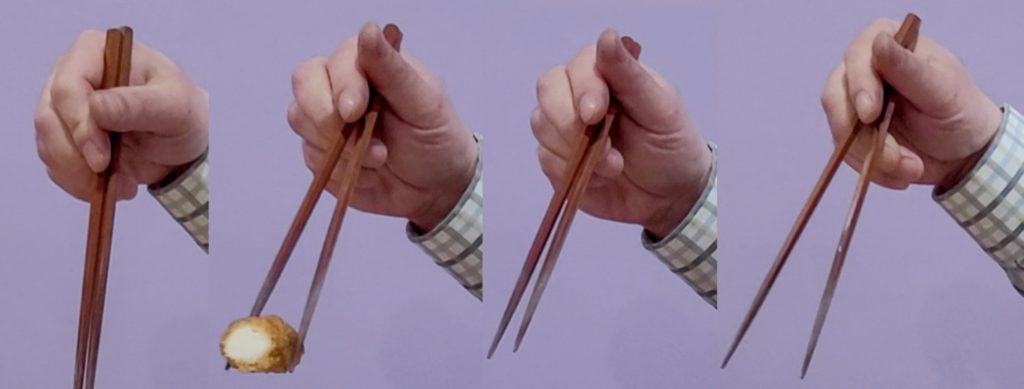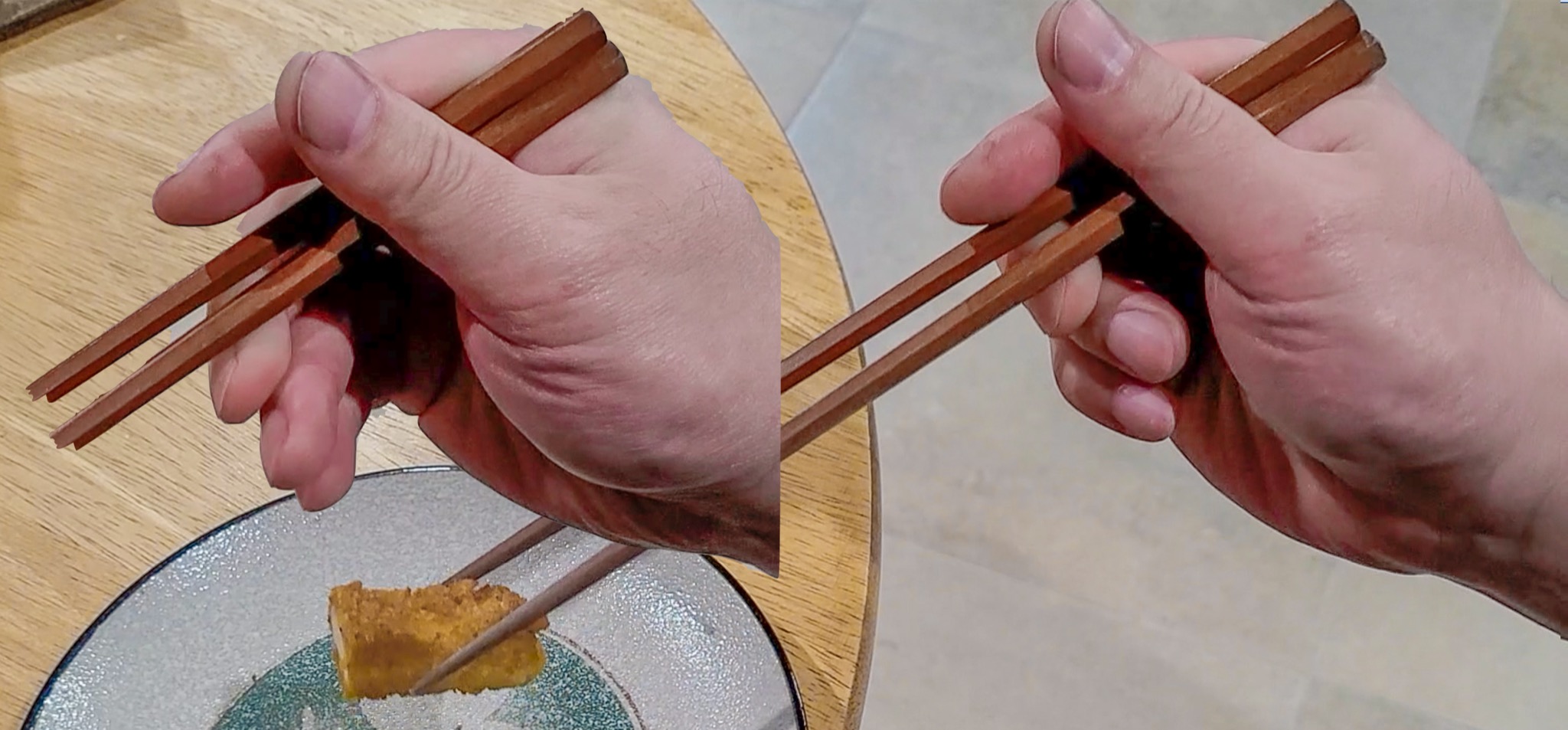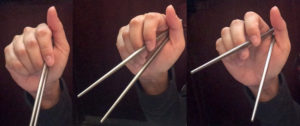Last Updated on June 16, 2021 by Staff
Lateral Squid is a Lateral Classic variant where five fingers pulse like a squid, when extending chopstick apart. This short article highlights its squid-like finger movements. See parent article Lateral Classic grips for features that Lateral Squid shares with its sibling grips such as Lateral Chick. Also see Lateral chopstick grips for overall discussion about the largest chopstick family to which Lateral Squid belongs.
In Lateral Squid, the two chopsticks are not extended apart as much as other Lateral Classic siblings. And completely different finger movements are employed to extend chopsticks apart. All five fingers flex, in a way that look like pulsing squid tentacles. Thus the alias Lateral Squid.
This chopstick move seems too magical to be real. Most readers will have a hard time replicating it. The following stop-motion video shows key frames in this movement, in stop-motion animation. The move starts with the Abutting posture, and ends with the Open posture. At a glance, it looks like the practitioner simply bumps the two chopsticks up, and they happen to fall back on the middle finger, now nicely extended apart.
This move actually consists of two acts. The first act has the joint of the thumb work together with the of the middle finger, to roll the top chopstick away from the abutting configuration. If you watch the edges of the hexagonal top chopstick very carefully, you will see that it gets rolled for about 30° in the first act. This roll causes the chopstick to tilt out at the same time. This is the same planetary gear mechanism described in Planetary gears: physics of chopsticks. Key frames in the first act are shown below.

Once there exists a small gap between the two chopsticks, then the second act begins. Now the base of the thumb works with the same middle finger knuckle to sandwich, instead, the bottom chopstick. They hold the bottom chopstick immobile. The thumb joint now nudges the top chopstick away from the bottom chopstick which is held immobile. When the top chopstick slides past and clears the middle finger knuckle, the move is complete.

The same tip extension move can be observed in the following two videos as well, where the practitioner picks up a piece of food. Lateral Squid is among the hardest chopstick grips to master.
Following is a summary of key postures in Lateral Squid.


Finally, let’s look at this grip alongside a short video clip of a squid from Feeding Time for the Squid from Erick Tseng.
Taiwanese: 邊仔柔魚
This grip is known as 邊仔柔魚 (piⁿ-á jiû-hî) in Taiwanese.



